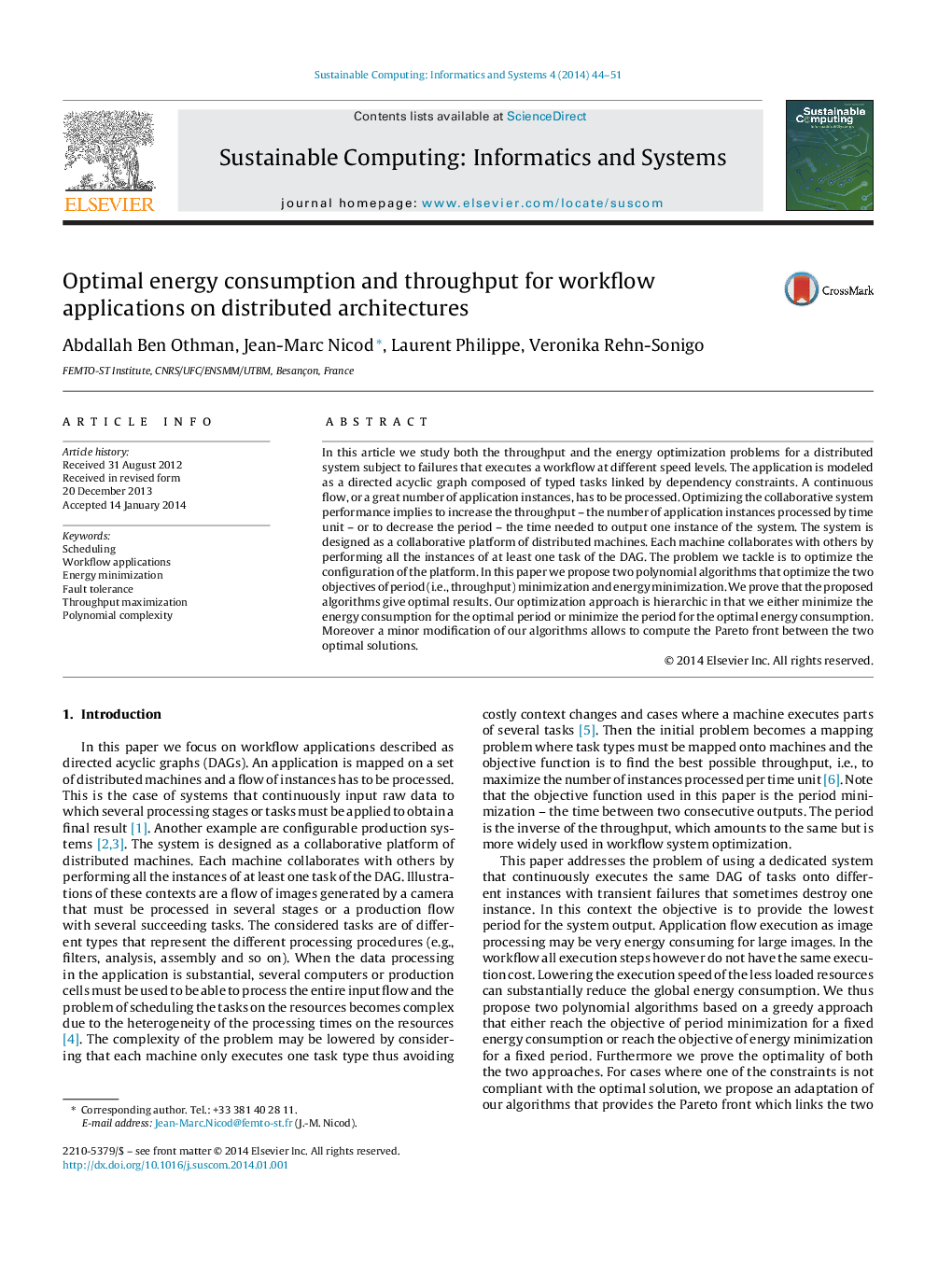| Article ID | Journal | Published Year | Pages | File Type |
|---|---|---|---|---|
| 493650 | Sustainable Computing: Informatics and Systems | 2014 | 8 Pages |
•Optimization of the throughput (in fact the period that is the inverse of the throughput) by using a polynomial time greedy algorithm that considers different speed levels for the machines of the considered platform. The energy consumption is minimal for the optimal period.•Optimization of the energy consumption by using a greedy algorithm too. The configuration that is exhibited reaches the minimal period for the optimal energy configuration.•The optimality of the two approaches is proven.•Alternative solutions are proposed when constraints occur for the period or the energy. A Pareto front can be computed to the appropriate values of the constraints.
In this article we study both the throughput and the energy optimization problems for a distributed system subject to failures that executes a workflow at different speed levels. The application is modeled as a directed acyclic graph composed of typed tasks linked by dependency constraints. A continuous flow, or a great number of application instances, has to be processed. Optimizing the collaborative system performance implies to increase the throughput – the number of application instances processed by time unit – or to decrease the period – the time needed to output one instance of the system. The system is designed as a collaborative platform of distributed machines. Each machine collaborates with others by performing all the instances of at least one task of the DAG. The problem we tackle is to optimize the configuration of the platform. In this paper we propose two polynomial algorithms that optimize the two objectives of period (i.e., throughput) minimization and energy minimization. We prove that the proposed algorithms give optimal results. Our optimization approach is hierarchic in that we either minimize the energy consumption for the optimal period or minimize the period for the optimal energy consumption. Moreover a minor modification of our algorithms allows to compute the Pareto front between the two optimal solutions.
